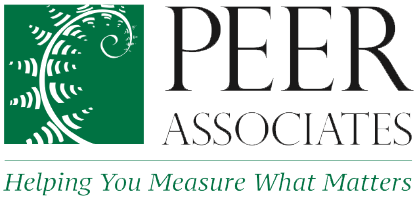Who cares?
Getting started on a program evaluation can be a bit confusing or overwhelming. It can also be the moment of highest leverage that sets a project on the path toward success.
PEER starts every project with some version of a “stakeholder prioritization” exercise. It’s the way we operationalize the Utilization-focused Evaluation approach that Michael Quinn Patton has so eloquently described in his various books and talks. The basic idea is that specifically planning for intended use of evaluations by intended users makes it much more likely that the evaluation will actually be used. Kind of duh, but also pretty profound.
We have developed a stakeholder prioritization chart, which you can use or modify if you like.
The first step is to brainstorm a list of all stakeholders for the evaluation. By stakeholder, we mean anyone who influences, is influenced by, or otherwise cares about the evaluation process or product. The list should be long, and the length of it is a lesson in and of itself. Then go through a process of identifying the small handful from that list that are probably the highest priority.
For this smaller group of stakeholders, systematically go through and identify each of the things in the next four columns in the chart: the decisions they make, the types and sources of evidence that are most compelling to them, and the level of rigor that is actually required for those decisions. It sounds easy, but it really can be quite a challenge. It’s worth it to be as comprehensive as you’re willing and able during this part of the process.
Two insights often emerge at this point. One, it is usually clear that the evaluation will not be able to address all the decisions that all the stakeholders need to make. There will need to be some choosing amongst options. Two, the really most important targets of the evaluation tend to start rising to the top.
Now for the hardest (and most important!) step: rank ordering the stakeholders in terms of this specific evaluation project. Clients usually say some version of “these top two (or three) are the highest priority.” That’s not good enough. In order to maximize the benefit from your limited evaluation resources, it’s super helpful to identify the SINGLE highest priority intended user of the evaluation work. (Note: it’s easy to get confused about stakeholder priority for the project as a whole versus stakeholder priority for this evaluation, so stick to the latter - this is about the evaluation work.) In an ideal world, that user is an individual with an actual name and face. As the evaluation progresses, you’ll find that that level of specificity is helpful over and over again. More typically, the highest priority stakeholder is a small group, e.g. staff or a particular funder.
Once that troublesome task is done, you’re really ready to start thinking about planning your evaluation. All decisions about methods, sample, word choice, reporting formats, timelines, and, essentially, everything should be made in service of your single highest priority intended user and the highest priority decisions they need to make.
The silver lining payoff for the stress of having to say “no” to so many important (but not MOST important!) stakeholders is this: whatever you do for the highest priority is usually also useful for a lot (even most) of the other stakeholders.
But when you’re trying to get the wording of a survey just right, or when you’re trying to figure out if you should spend the resources to interview that one additional person, or when you’re trying to figure out whether to do an executive summary report or a slide deck, you’ll be glad you went through the trouble up front to focus on the specific intended use of the highest priority user of this evaluation project.
So, in the end, it really does come down to the question of: “Who cares?”

